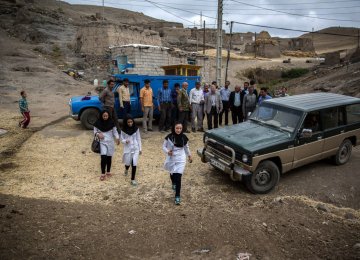Critical shortage in the health workforce and inequitable geographical distribution of physicians pose major challenges to achieve health targets set in the national development goals.
To address the problem, by the end of November “2,000 specialists in 27 different medical fields will be dispensed across 580 state-run hospitals in 378 cities,” said Dr Mohammad Aghajani, deputy minister of health for treatment, IRNA reported.
Accordingly, 1600 specialists will start work in deprived areas in the near future. “The plan aims for equitable distribution of healthcare professionals,” he said on the sidelines of the recent meeting of health deputies for treatment at Tehran’s Milad Tower International Conference Hall.
“The measure can significantly improve access to quality healthcare services in different parts of the country (at least for a specific period of time since doctors return to their original place of work after completion of field services). However, we still have a shortage of specialists in neurosurgery, radiology, and orthopedics,” he said.
Currently, most of the specialists who are being sent to the deprived areas are active in the fields of internal medicine, pediatrics, and obstetrics and gynecology.
“At present, the average number of medical specialists for our population of 80 million is 33% lower compared to global standards; albeit the situation is not the same in all cities.”
According to the Iran Medical Council, there are 78,000 general practitioners (GPs), 36,000 specialists, 24,000 general dentists, 2,000 dental specialists, 36,000 midwives, and 15,000 physiotherapists, nutritionists, optometrists, and audiologists in the country. Iraj Harirchi, deputy minister of health, had earlier said about 40% of all physicians work in Tehran Province.
Specialist services are no doubt available in all provinces but quite naturally access to healthcare facilities is far better in the capital, Tehran, given its huge population of over 10 million and the existing infrastructure, Aghajani added.
Explaining the incentives given to encourage health specialists to work in the underprivileged areas, he said, physicians are paid based on the number of patients they see.
“In some places the number of doctors is few (sometimes there is only one physician for a small town) and the workload heavy; therefore physicians are paid according to the number of patients they examine.”
Midwives Sufficient
Increasing women’s access to quality midwifery services has become a focus of global efforts to realize the right of every woman to the best possible health care during pregnancy and childbirth.
As per the recent figures released by the Iranian Association of Midwifery there are 36,000 midwives in the country, and each year 1.5 million births are registered, which means there are 24 midwives per 1,000 births per year.
The adequate number of midwives has significantly reduced maternal mortality, still births, and new born mortality, said Aghajani.
Health Ministry figures show that maternal mortality rate in 2013 stood at 19.7% (or 291 deaths) corresponding to the total number of 1.47 million births. The rate saw a marginal decline to 19% (or 293) deaths for a total number of 1.54 million births in 2014.
In 2013 infant mortality was 15 per 1000 births. The figure decreased to 13.8 in 2015.
According to the World Health Organization the risk of infant mortality is highest in the WHO African Region (55 per 1000 live births), over five times higher than that in the WHO European Region (10 per 1000 live births).






Add new comment
Read our comment policy before posting your viewpoints